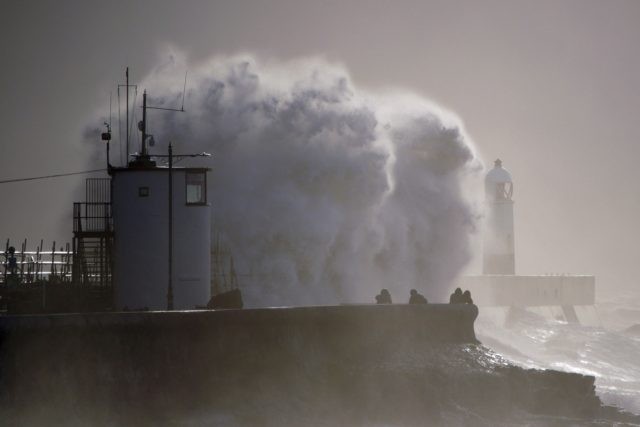Northern Europe has been battered by the third major storm in five days
Northern Europe battered by 3rd major storm; deaths hit 14By DANICA KIRKAAssociated PressThe Associated PressLONDON
LONDON (AP) — Northern Europe has been battered by its third major storm in five days, with heavy rains and high winds killing at least two more people, disrupting travel and prompting hundreds of flood alerts across a region still recovering from last week’s hurricane-force winds.
Storm Franklin pushed in from the North Atlantic on Sunday afternoon even as crews worked to clear fallen trees and restore power to thousands of customers hit by storms Dudley and Eunice last week. Heavy rains and high winds swept across Northern Ireland and northern England on Monday before moving on to France. England’s environment agency issued more than 300 flood warnings and alerts and train operators urged people not to travel.
In France, a couple in their 70s died Sunday after their car was swept into the English Channel near a small town in Normandy. The couple had called for help but it did not reach them in time.
“With the wind, the car skidded,’’ Herve Bougon, mayor of Bricqueville-Sur-Mer, told the Ouest-France newspaper. “It was pushed onto its side as it sank into the water.”
At least 14 people have died across Europe during a week of wild weather that meteorologists say is being fueled by an unusually strong jet stream over the North Atlantic. The storms have left hundreds of thousands of people without power and triggered local flooding and evacuations as high winds ripped the roofs off buildings.
Gusts of up to 87 mph (140 kph) were recorded late Sunday on the Isle of Wight. A gust of 122 mph (196 kph), provisionally the highest ever recorded in England, was measured Friday on the Isle of Wight as Storm Eunice hit the region. Hurricane-level winds start at 74 mph.
Official weather warnings in Germany, where the latest storm is known as Antonia, were lifted on Monday, though disruption to transport continued in northern parts of the country.
Experts said the weather toll for the week has been extensive for the environment as well. The German Aerospace Center, DLR, says the current storms hitting northern Europe would likely result in widespread damage to already weakened forests.
In a study released Monday, the government-funded agency said satellite data shows massive forest loss due to drought and bark beetle infestation between 2018 and 2021. These factors — which are exacerbated by global warming — weaken trees, making them vulnerable, DLR said.
“The current storm situation across Germany will probably again lead to the need to remove damaged trees in many areas,” it said.
Insurance broker Aon estimated the insured damage in Germany from the successive storms at 1.6 billion euros ($1.8 billion). The Dutch insurers’ association estimated that the three storms caused at least 500 million euros ($567 million) of damage across the Netherlands.
Despite preparations and warning by weather authorities, “the February storms have sparked a record number of claims and an enormous damages bill,” said Richard Weurding, general director of the Dutch Association of Insurers.
The storms blew roofs off buildings and uprooted trees across the Netherlands, killing four people on Friday as Eunice lashed the country. Insurers warned that more damage could still be to come with strong winds forecast in coming days.
In Denmark, the storm uprooted trees and disrupted rail services in and around Copenhagen, the capital. Sweden saw heavy snowfall that shut down buses in its capital city of Stockholm.
___
Elaine Ganley in Paris, Jan M. Olsen in Copenhagen, Frank Jordans and Geir Moulson in Berlin and Mike Corder in The Hague contributed to this story.
___
Follow all AP stories about climate change issues at https://apnews.com/hub/climate.

COMMENTS
Please let us know if you're having issues with commenting.